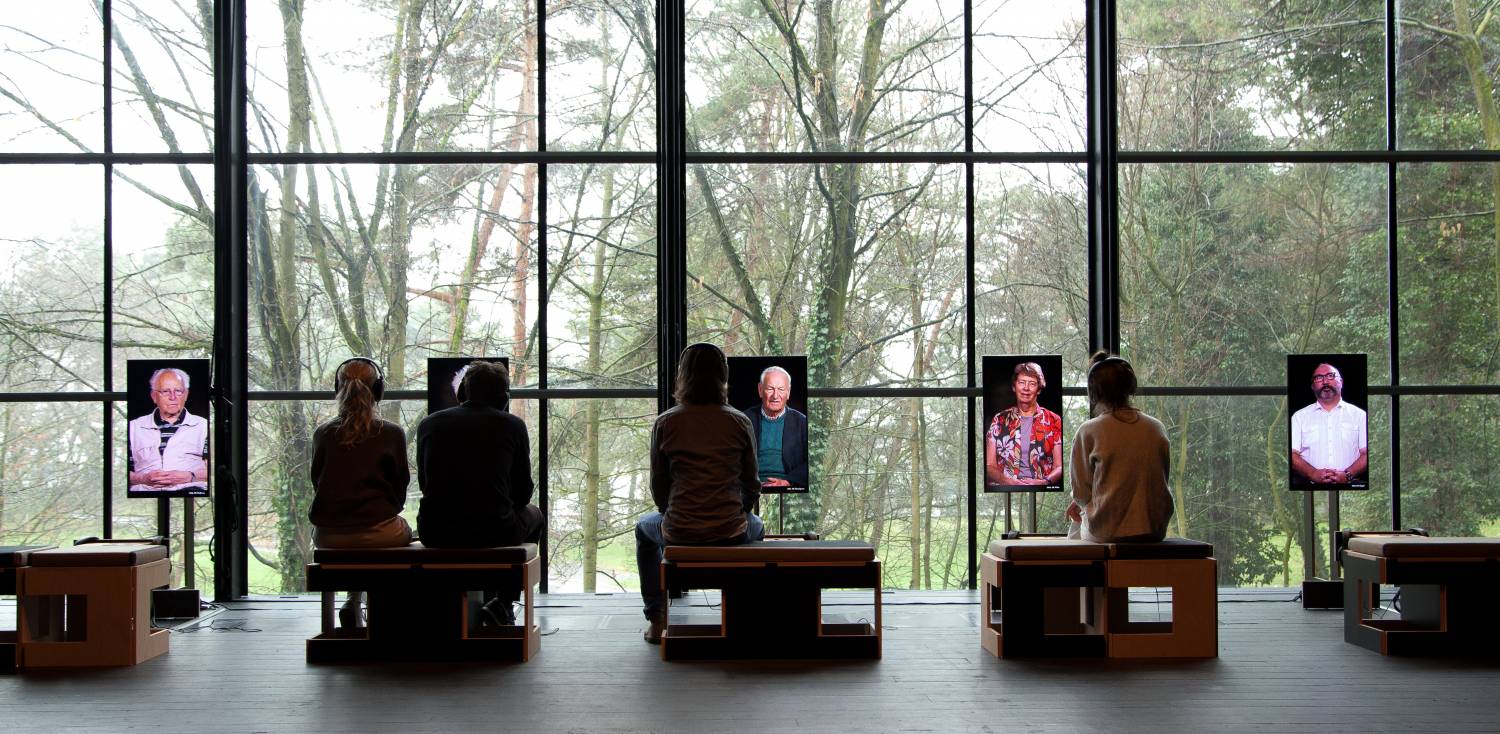Twenty-one. That grand birthday. That turning of age moment. Everyone remembers something about that pivotal year; whether they started work, travelled the world, met their first love, had an affair, had a child. Everyone has their own story and in Summerhall’s exhibition, 21: Memories of Growing Up, Swiss artist Mats Staub charts these personal narratives of people’s twenty-first year. Describing himself as a listener, Staub has employed listening as a creative device to create a video installation exploring the process of becoming an adult.
The exhibition takes place down in the depths of Summerhall, which is thriving with Festival energy and crowds. The downstairs exhibition space offers a place of calm and quiet contemplation as the viewer enters the silent space. Within the exhibition, several TV monitors are arranged upright in a portrait position. Each depicts a person sat, staring directly back into the camera. They range in age, dress sense, ethnicity and emotion, with each person sitting in their own unique manner. The installation offers seats and headphones for every TV present, allowing the viewer to choose which TV and person to sit in front of.
It’s a surprising moment when the audio begins over the headsets and yet the person’s lips remain still. It takes a moment to realise they are in fact listening to their own account of being twenty-one being played back to them. Staub has cleverly recorded their experiences and then three months later played people’s recordings back to them, whilst filming their reactions. People’s accounts range between seven and twenty minutes, with the viewer free to listen to as much or as little to each account as they please. Yet it is addictive; the voices take the viewer across cultures, across the globe and into peoples’ home lives, offering a fascinating and emotional listening experience.
It’s an incredibly intimate installation, as the viewer hears not only very personal accounts, but also watches people’s reactions to themselves. The people on screen laugh, they smile, they cast their eyes down shyly and they cry. Stories of being a lesbian mother, being married to a Nazi for fourteen years, living and cooking with rations during the War, having an affair with a married man; the tales are endless and full of warmth. Inevitably tragic at times, each story and account brims with life, vitality, failures and lessons. Although some stories carry more melancholy than others, the overall sentiment is one of hope and fondness, with most people recalling the delights of being a youthful, carefree twenty-one year old.
Through his intimate portraits, Staub enables not only his participants, but also his viewers to relive and reflect on their youth, their experiences and how their life’s journey has taken them where they are today.
